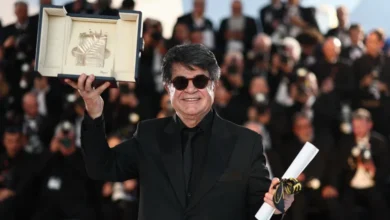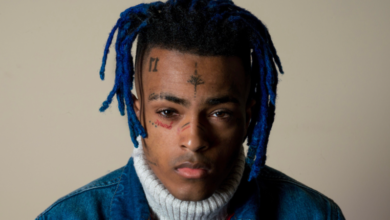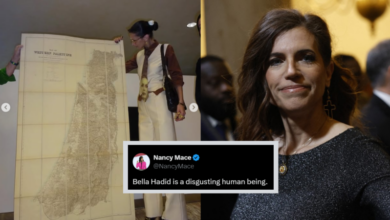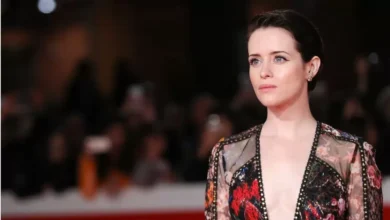Saudi-American artist Sarah Brahim showcases her creations in Lugano
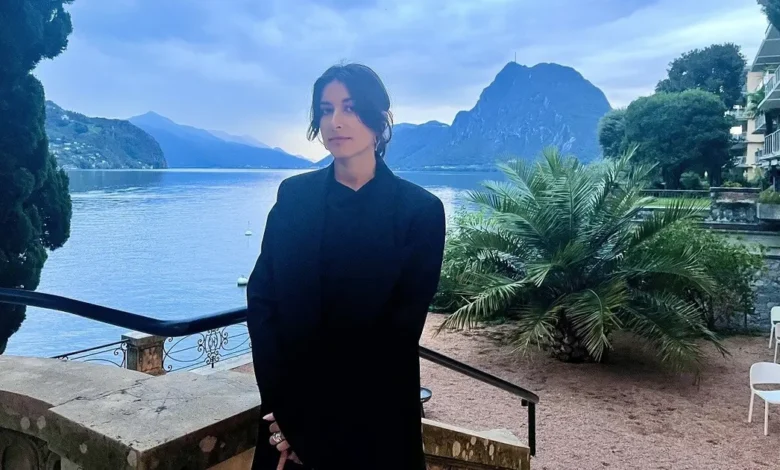
In a deeply sensitive and emotion-driven exhibition at Bally Foundation’s cultural space in Lugano, Switzerland, Saudi-American artist and dancer Sarah Brahim presents her first solo show, “Sometimes We Are Eternal.”
Spread over two floors of the stunning Villa Heleneum – a repurposed 1930s villa directly on the shores of Lake Lugano, which now serves as Bally Foundation’s headquarters – the immersive exhibition brings together 10 newly commissioned site-specific installations by Brahim.
Through photography, video and sculptural works curated by Vittoria Matarrese, Brahim looks back on the past 10 years of her life, exploring themes of transformation, grief, memory and how the body responds to these stimuli, connected with the mesmerizing surrounding landscape of the Alpine lake.
“The first time we met, she told me that she wanted to change a little bit of what she was doing, and she had a more complex project because it is a sort of resume of the past 10 years of her life,” Matarrese told Al Arabiya English. “Sarah had suffered the loss of her mother 10 years ago. So, after 10 years, she is now really able to talk about grief with a sort of liberation.”
Essential elements
The installations are presented in dialogue with the landscape outside the villa’s massive windows and the architecture of the space – originally built by a dancer in the 1930s – both essential elements to Brahim’s practice as an artist and a dancer.

She grew up dancing contemporary and tap dance, attending the prestigious Tamalpa dance school founded in the 1960s by Anna Halprin, who pioneered the expressive, experimental art form of postmodern dance.
“The show is about the many nuanced experiences of transformation, which could be from the point of disruption, but I’m also very attached to people who want to progress and expand, to be more connected, soulful and spiritual,” Brahim told Al Arabiya English. “Each work is me trying to encapsulate something that is unseen, intangible and really hard to visualize. They’re all feelings, but I think they’re also works that people can bring themselves to, hopefully, to put their own perspective on it,” Brahim added.
“We planned each work for each room, thinking about how the landscape could be brought in, how it would transform on a sunny day and feel more effervescent, and on a cloudy day heavier,” she explains. “The point of research is always the body, either mine or my collaborators’, even when using the camera. We call it a ‘body’ of a camera or a ‘body of land,’ both of which are tools for me to play with.”
Matarrese describes the work as an artistic pas de deux – a duet between two dancers – presented as an intimate dialogue between the dancer and her inner-versus-outer transformations as they find the inner stillness needed to perform and work through complex emotions.
Assurance of being unified
One of the first works seen in the show is “The Second Sound of Echo,” a two-channel video piece tethered by the bond between Brahim and her father. As he uses two beach stones to create a heartbeat-like rhythm, aiming to produce a spark, Brahim dances to the beat, attempting to match her heartbeat to his. The piece is about knowing that one day, her father will be gone and this moment in time is the only assurance they have of being unified.

“Dance really taught me about relationships, musicality and how things look in space. Dancers are always studying physics and architecture and how they move in architecture,” Brahim added.
On the second floor, “No Wrong Sounds” is a sound installation and artwork inspired by American composer Pauline Oliveros, who wrote a story about possibly relearning what children are taught are ‘bad’ or ‘negative’ senses.
Enlisting the help of a group of tap dancers under the age of 10, she told each of them to tap out things such as the sound of a river, their own heartbeat, or the wind in the trees, leaving black scuff mark patterns on a whiteboard – marks of individual interpretations, but that are also in harmony with the other dancers.
“[Olivaros] was doing research to discover if we could re-associate the sounds from our childhood, for example, a child in a hallway breaking a vase, and the first sound is the sound of it changing form, but the second is the parent screaming or yelling, and that teaches you it’s as a negative thing,” Brahim explained. “I wanted to make something that felt more like acceptance to transformation. What if we could softly surrender to things changing form instead of being angry at something breaking or changing?”
An immersive conversation
Matarrese notes that because Brahim’s work deals with emotions and small, intangible notions, the installations themselves are large and life-sized, projected onto entire walls or through massive screens, as though the people in the shots are standing directly in front of the viewer, immersing themselves into the conversation.

“Adagio” takes up an entire room on the second floor, showing a long projection of Brahim slowly walking across a seashore with an analog camera pressed into the diaphragm, recording the shifting of her body as she moves and breathes. The captured footage is shown on the opposite wall.
“It’s called an extremely slow walk. It’s so simple, but it makes you immediately aware of every movement, articulation and balance of your body, and immediately you internalize,” she shared. “It really became a strong part of my practice to recreate this in different environments or places I wanted to experience differently.”
She continued: “The camera became really important to me, the analog shift because apart from being a pathway and connection of light, it also shows a lot of what is filmed on that camera and it became for me an external organ.”
She further explained: “It’s another way we can record and access memory. It’s not the same as what I feel in my mind, but it’s another portal, so I press the camera as hard as possible against my body to see if, during the walk, you can witness the breath and the perspective of my body, as well as the perspective from the outside.”
Viewing the installations, in turn, instills a sense of introspection into the viewer. Surrounded by the misty Lake Lugano and tall cypress trees planted around the villa, it’s easy to resonate with Brahim’s thought-provoking and pensive practice.
“Sometimes We Are Eternal” runs until April 28, 2024, at Villa Heleneum, Lugano, Switzerland.
